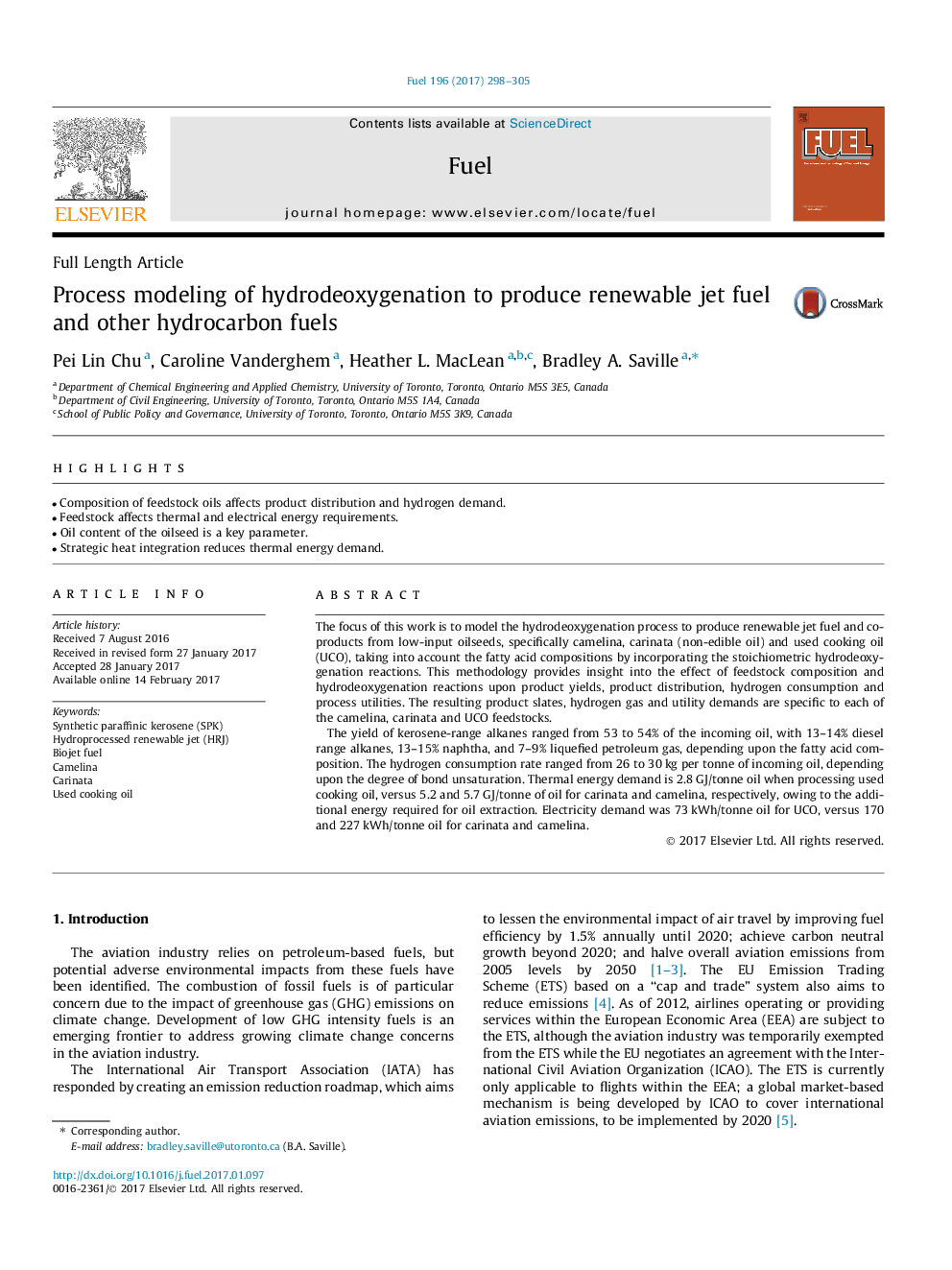| کد مقاله | کد نشریه | سال انتشار | مقاله انگلیسی | نسخه تمام متن |
|---|---|---|---|---|
| 6475058 | 1424968 | 2017 | 8 صفحه PDF | دانلود رایگان |
- Composition of feedstock oils affects product distribution and hydrogen demand.
- Feedstock affects thermal and electrical energy requirements.
- Oil content of the oilseed is a key parameter.
- Strategic heat integration reduces thermal energy demand.
The focus of this work is to model the hydrodeoxygenation process to produce renewable jet fuel and co-products from low-input oilseeds, specifically camelina, carinata (non-edible oil) and used cooking oil (UCO), taking into account the fatty acid compositions by incorporating the stoichiometric hydrodeoxygenation reactions. This methodology provides insight into the effect of feedstock composition and hydrodeoxygenation reactions upon product yields, product distribution, hydrogen consumption and process utilities. The resulting product slates, hydrogen gas and utility demands are specific to each of the camelina, carinata and UCO feedstocks.The yield of kerosene-range alkanes ranged from 53 to 54% of the incoming oil, with 13-14% diesel range alkanes, 13-15% naphtha, and 7-9% liquefied petroleum gas, depending upon the fatty acid composition. The hydrogen consumption rate ranged from 26 to 30Â kg per tonne of incoming oil, depending upon the degree of bond unsaturation. Thermal energy demand is 2.8Â GJ/tonne oil when processing used cooking oil, versus 5.2 and 5.7Â GJ/tonne of oil for carinata and camelina, respectively, owing to the additional energy required for oil extraction. Electricity demand was 73Â kWh/tonne oil for UCO, versus 170 and 227Â kWh/tonne oil for carinata and camelina.
Journal: Fuel - Volume 196, 15 May 2017, Pages 298-305
